The Mekong Delta is considered the “rice heartland” of Vietnam, contributing more than 50% of rice production and more than 90% of rice exports. However, it is also the region most severely affected by climate change, frequently facing drought, saltwater intrusion, storms, floods, landslides and epidemics.
With production heavily dependent on nature, rice growers still “bet” on the weather each crop season. In that context, rice crop damage insurance is considered a “financial shield” to help farmers reduce losses, stabilize income and protect production capital flow.
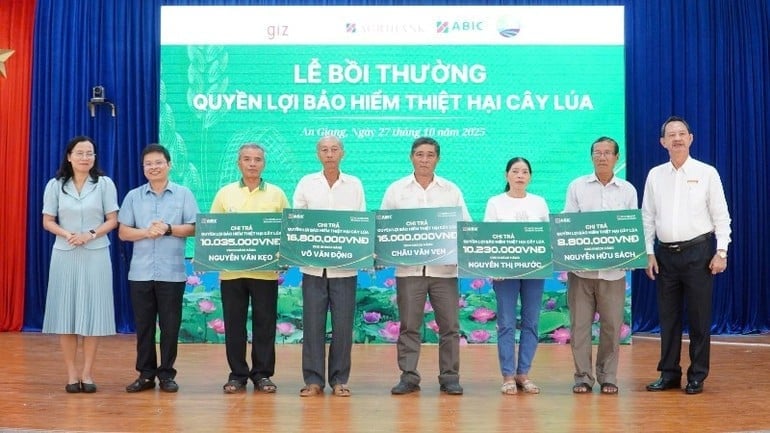
Compensation ceremony for rice crop damage insurance benefits in An Giang . Photo: ABIC.
At the seminar "Challenges and solutions for rice crop damage insurance in the Mekong Delta" organized recently by Agribank Insurance in collaboration with the Department of Cooperative Economics - Ministry of Agriculture and Environment , An Giang Department of Agriculture and Environment, Agribank An Giang and GIZ Organization, delegates all commented: agricultural insurance has not really entered into life.
The biggest challenges are the risk of fraud and damage assessment. Natural disasters and pests develop rapidly, making it difficult to determine the cause and extent of damage, making insurance companies hesitant to expand their products.
In addition, agricultural data infrastructure is weak, lacking a common database on weather, production, and risk. This makes pricing, product design, and claims assessment inaccurate and costly.
Another barrier is small-scale, fragmented production, which increases insurance costs, makes it difficult to control production processes and determine damages. The link between farmers, cooperatives, businesses, banks and insurance companies is still loose, reducing the sustainability of the model.
A notable highlight is the credit-insurance linkage model implemented by Agribank and Agribank Insurance. This model is considered a “closed circle of protection” that helps the credit flow not to be interrupted when risks occur.
Mr. Tran Van Soul, Director of Agribank An Giang, said that Agribank is currently the main bank serving “three farmers”, with more than 70% of outstanding loans in An Giang for rice production. Combining insurance with credit helps banks preserve loan capital, farmers feel secure in production, and insurance companies have stable data and distribution channels.
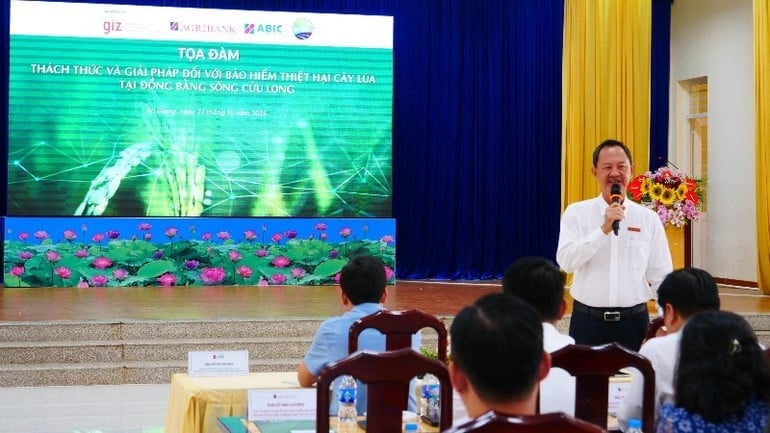
Mr. Tran Van Soul, Director of Agribank An Giang, spoke at the seminar. Photo: ABIC.
Accordingly, Agribank provides capital to farmers and cooperatives participating in the 1 million hectare high-quality rice project; Agribank Insurance provides rice crop damage insurance and credit security products. When risks occur, insurance pays out to help people pay off debts and maintain production, while the bank ensures capital flow.
In An Giang, Agribank Insurance has cooperated with GIZ to pilot rice crop insurance in 11 cooperatives. During the heavy rains on August 21-22, the company paid 61.8 million VND to households in Phu An Hung Cooperative, helping them restore production in time. At the same time, nearly 350 million VND in credit security insurance was also paid to borrowers facing health risks - a clear demonstration of the humanity of this model.
Mr. Nguyen Xuan Tien, Chairman of An Phu Commune People's Committee, assessed that this is a great source of spiritual encouragement to help people have more confidence in the policy. Representative of the Ministry of Agriculture and Environment, Ms. Dinh Thi Hoa - Head of the Department of Poverty Reduction and Social Security - acknowledged ABIC's efforts and suggested continuing to improve products to suit the production characteristics of the Mekong Delta region.
According to experts, for rice crop damage insurance to be effective, close coordination between the State, enterprises and farmers is needed. First of all, the State needs to amend and improve the legal framework, expand the list of supported crops, reduce administrative procedures and apply a flexible pricing mechanism according to risk areas.
At the same time, it is necessary to build a shared digital database on agriculture, integrating meteorological, hydrological, production and risk information so that insurance companies have a basis to design accurate and transparent products and reduce operating costs. At the same time, propaganda and training must be promoted so that farmers clearly understand their rights, obligations and insurance participation procedures. When people proactively consider insurance as an essential part of production, instead of a "situational solution", this model can develop sustainably.
In the context of unpredictable climate change and increasing production risks, rice crop insurance is not only a tool to share losses, but also a financial lever to protect farmers' livelihoods, stabilize credit and maintain the rice production and consumption chain.
If operated synchronously, with digital data, flexible policy mechanisms and close links between parties, rice crop insurance will become a solid "financial shield", contributing to realizing the goal of sustainable agricultural development in the Mekong Delta region.
Source: https://nongnghiepmoitruong.vn/bao-hiem-cay-lua-la-chan-tai-chinh-cho-nguoi-trong-lua-d781501.html


![[Photo] Ho Chi Minh City Youth Take Action for a Cleaner Environment](https://vphoto.vietnam.vn/thumb/1200x675/vietnam/resource/IMAGE/2025/11/04/1762233574890_550816358-1108586934787014-6430522970717297480-n-1-jpg.webp)
![[Photo] Ca Mau "struggling" to cope with the highest tide of the year, forecast to exceed alert level 3](https://vphoto.vietnam.vn/thumb/1200x675/vietnam/resource/IMAGE/2025/11/04/1762235371445_ndo_br_trieu-cuong-2-6486-jpg.webp)

![[Photo] The road connecting Dong Nai with Ho Chi Minh City is still unfinished after 5 years of construction.](https://vphoto.vietnam.vn/thumb/1200x675/vietnam/resource/IMAGE/2025/11/04/1762241675985_ndo_br_dji-20251104104418-0635-d-resize-1295-jpg.webp)
![[Photo] Panorama of the Patriotic Emulation Congress of Nhan Dan Newspaper for the period 2025-2030](https://vphoto.vietnam.vn/thumb/1200x675/vietnam/resource/IMAGE/2025/11/04/1762252775462_ndo_br_dhthiduayeuncbaond-6125-jpg.webp)

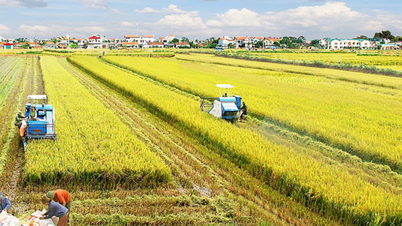


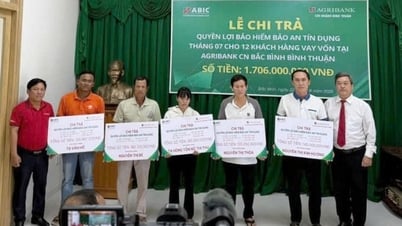

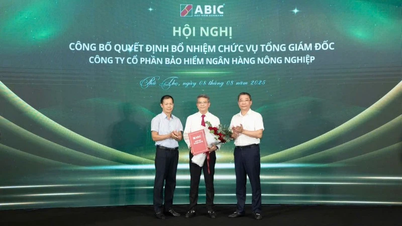




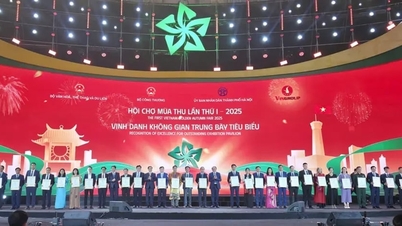





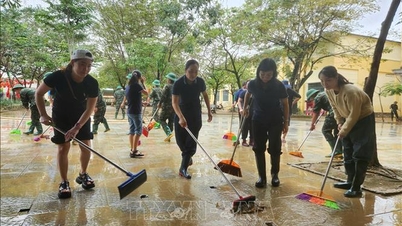





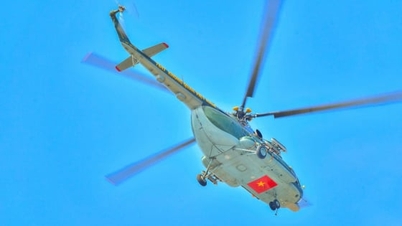
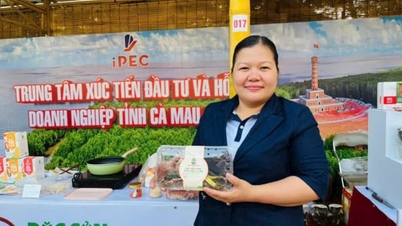

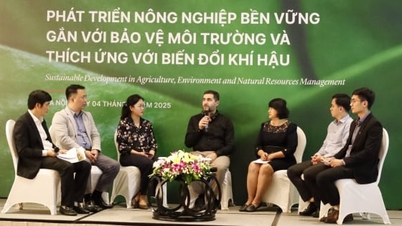
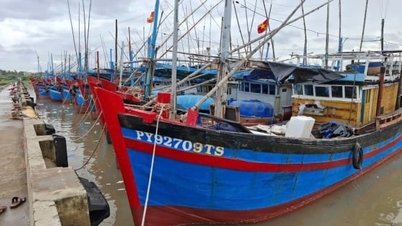




















































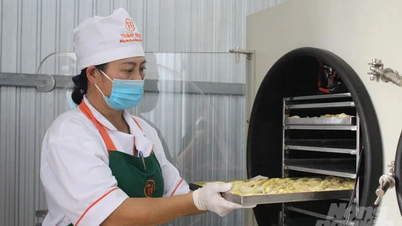
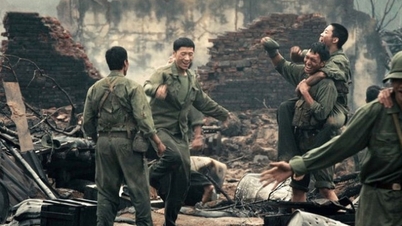
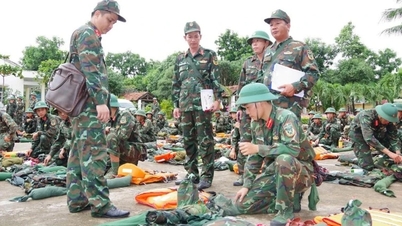












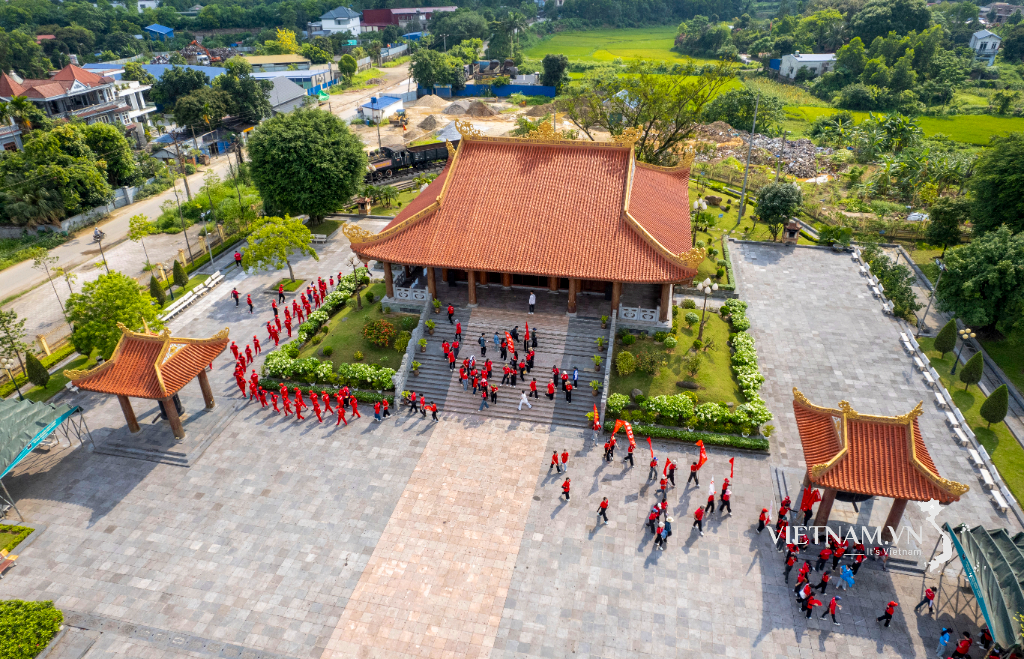

Comment (0)